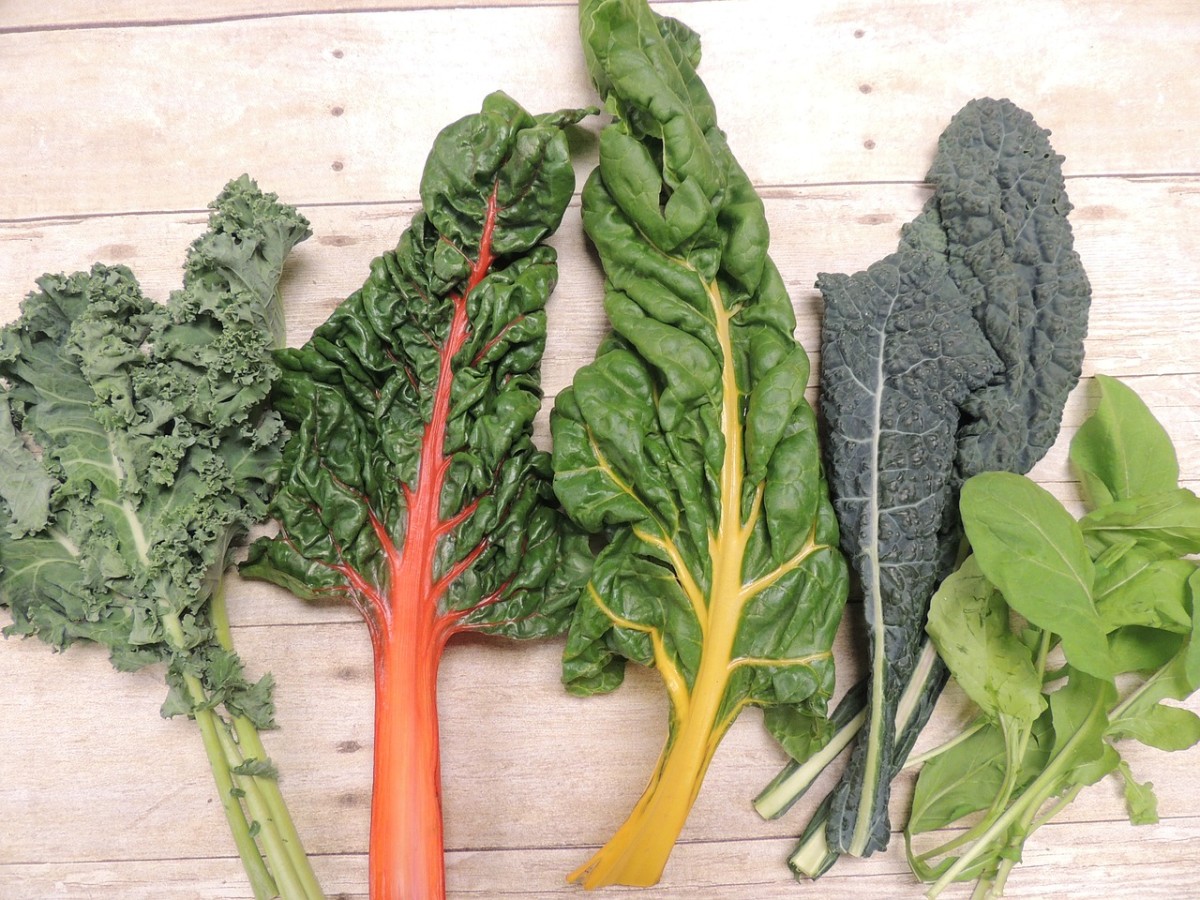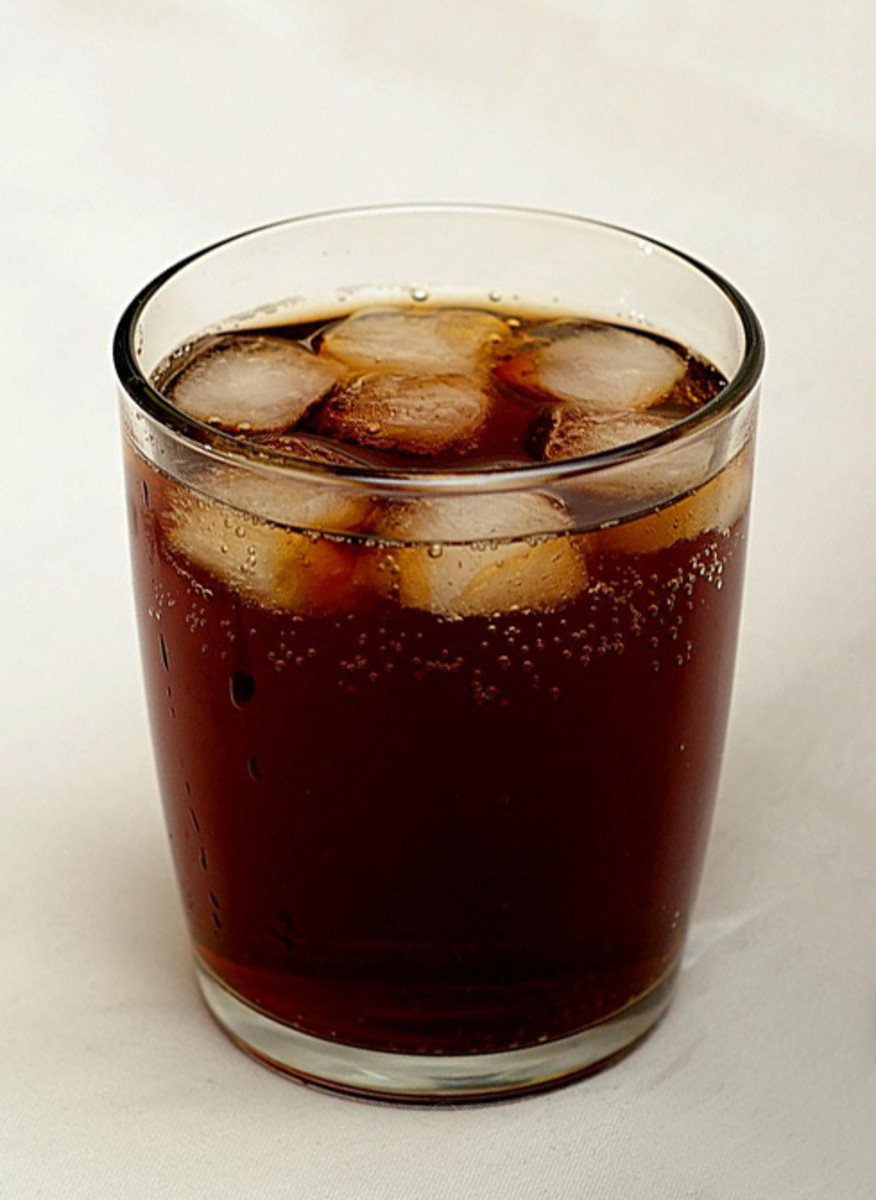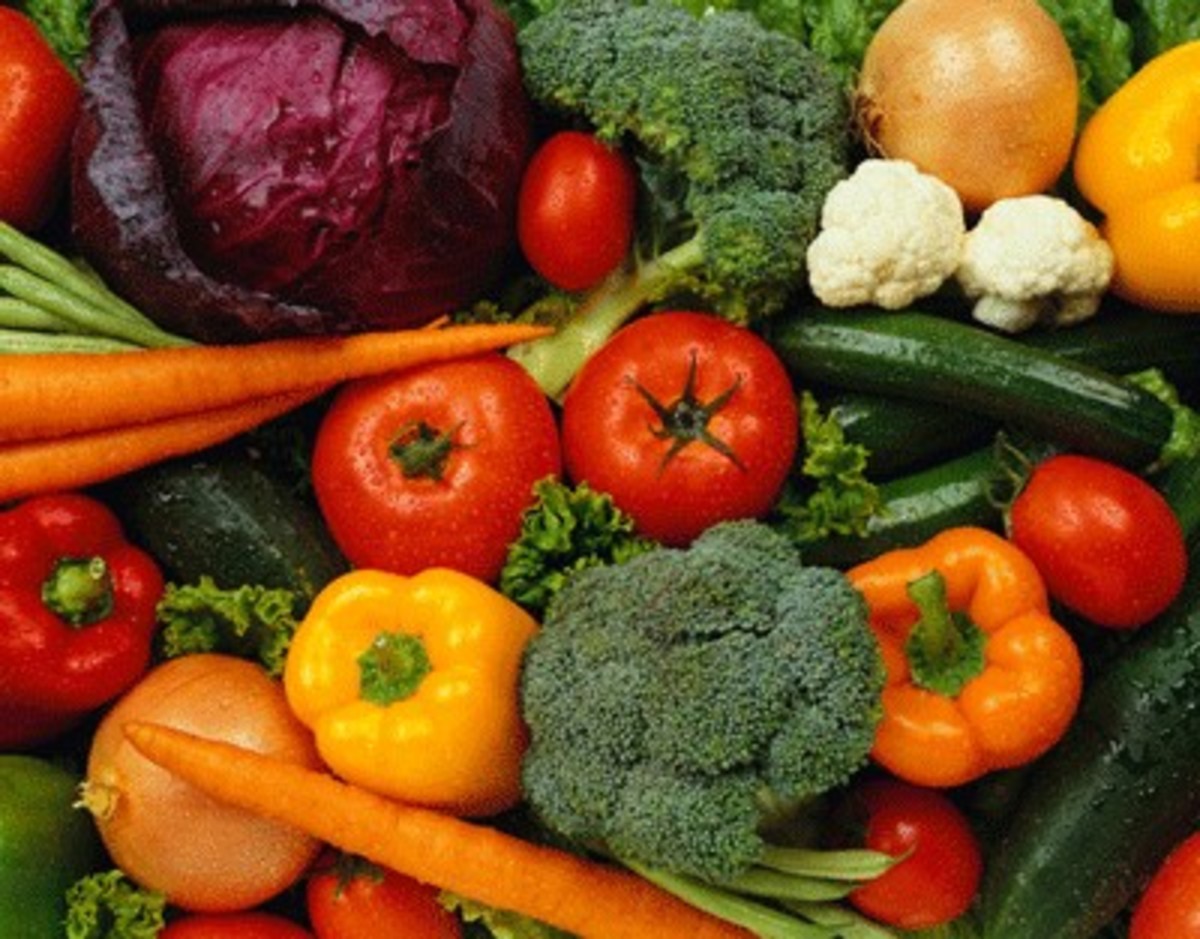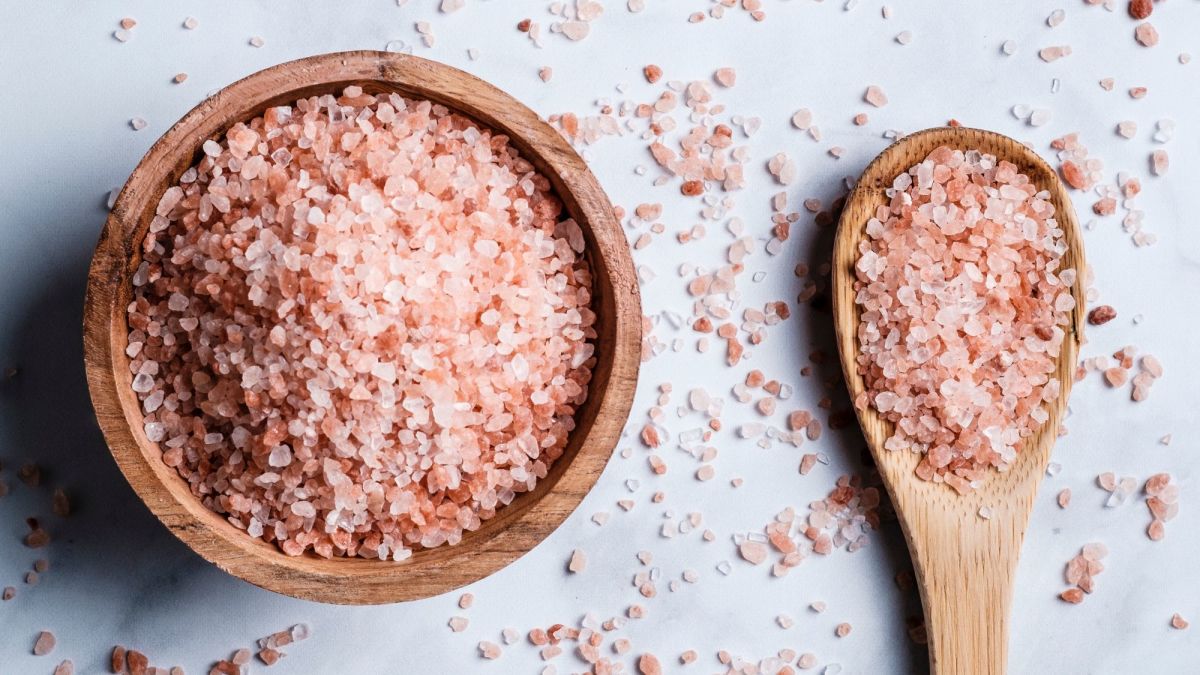The Facts About Minerals
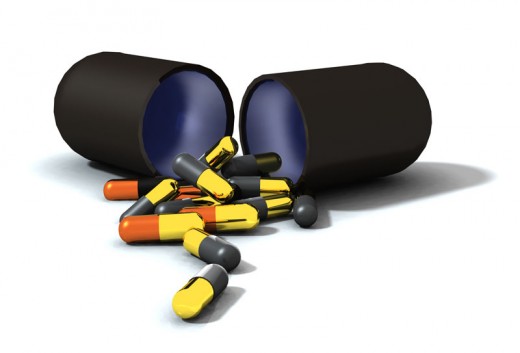
Minerals are necessary for life and health. Some, such as calcium, magnesium, sodium and potassium are required in large amounts, while others are needed in much smaller quantities, and are therefore called trace minerals. We obtain minerals from the food we eat, which in turn derive them from the soil or sea. Minerals in the soil are in inorganic form and we cannot absorb them directly. However, plants can, incorporating them in their cell structure, which renders them absorbable by man. These are called organic minerals.
Largely due to the depletion of minerals in the soil, fresh foods no longer contain the sufficient amounts of some minerals, creating the need for mineral supplementation. To ensure correct absorption these minerals must be attached to an organic material such as an amino acid. These are called acid chelated minerals. Other good chelating minerals are orotate and ascorbate vitamin C. Some mineral supplements need to be chelated to ensure absorption. However, always check whether the quantity contained within the tablet is the total weight of the mineral and its chelator, or whether it is just the mineral. For example, 100 mg of zinc orotate may only contain 5 mg of zinc.
Unfortunately, minerals are not as easy to pinpoint from their deficiency symptoms, since so many of the symptoms can be a result of other nutritional deficiencies too.
The RDI, 'recommended daily intake', is the minimum level before overt deficiency symptoms may develop. There is also an 'optimum level' which is based on controlled research under medical supervision. The doses are not prescriptive. It is up to the person to find the levels that suit them best, as individual variation is considerable. The RDIs are based on people 4 years or older, eating 2,000 calories per day.
7 Things You Need To Know About Minerals
- Although needed in much smaller quantities than the other essential nutrients (fats, carbohydrates, proteins, vitamins), minerals are vitally important for health and well-being.
- They provide 'structure' in the body whereas vitamins are more concerned with 'function'. However all are inter-related and essential to one another. A severe deficiency of just one mineral can see off a myriad of chain reactions throughout the whole body-often with the final symptoms of illness appearing totally unrelated to the original case.
- Minerals are very important during our growing cycles - as children, adolescents and in pregnancy, when structure is being formed.
- Individuals are born with a certain mineral focus. Whenever we become ill, the inbuilt hereditary mineral focus will need refurbishing.
- For inherited tendencies we must take a close look at our chemical make-up through our parents, grandparents, etc, and very often we find the same focus of mineral deficiencies and illness patterns continuing in generation after generation. eg. endocrine problems - need iodine and bromine liver and metabolism problems - needing sodium and sulfur, nervous system problems- needing magnesium and phosphorus.
- Everything we eat comes in chemical compounds - whether this comes from living or dead sources makes the difference.The more varied and 'whole' food we eat, the stronger our structure. Healthy bodies can extract vitamins and minerals more efficiently than those below par.
- If you want your body to feel, look and function like a Rolls Royce, don't feed it low-grade oil and fuel. You may not be able to change the body structure you were born with, but you can feed it well once you become aware of your inherited deficiencies and at the same time protect future generations from the same vulnerabilities.
Calcium
The most abundant mineral in the body is calcium, and 99 per cent of this is in the bones and teeth. The remaining 1 per cent is needed for balanced nerve function, blood clotting, the heart muscles, and also for enzyme reactions.
A lack of calcium can therefore result in osteoporosis, rickets, and contribute to the development of arthritic conditions. However, a hormone imbalance or lack of vitamin D can also disrupt the proper use of this mineral. Cramps, and irritability can be due to a lack of calcium, and this is probably the reason why hot milk drinks in the evening became popular, as the calcium they contain calms the nerves.
While many foods contain small quantities of calcium, only milk products and sesame seeds contain sufficient amounts to easily meet daily requirements of 800mg or 1200mg for boys and girls between age 11 and 18, or pregnant and lactating women. A quarter pound of sesame seeds contain over 1000mg and a pint of milk (1/2 liter) contains some 600mg although some say that pasteurization renders the calcium less absorbable. The best form of calcium supplement is dolomite, because it also contains the right balance of magnesium, which works closely with calcium.
Deficiency can lead to tooth decay, fragile bones, muscle and menstrual cramps, brittle nails, nervousness, headaches, eczema and rheumatoid arthritis.
Sources: Milk, cheese, meat, cereals, fish, green vegetables, sesame seeds, oats, millet, kelp, nuts, fresh vegetables.
RDI: 1000 mg
Chromium
The discovery that chromium is released into the bloodstream when the blood sugar level goes up, confirms its important role in helping insulin to control blood sugar levels. It is combined in the liver with B3, niacin, and two amino acids to make Glucose Tolerance Factor (GTF).
Since any conditions which cause an increase in blood sugar, for example eating sugar and cakes, or coffee, also use up chromium, this mineral is often deficient in those eating refined food diets. Chromium supplementation is also effective in treating hypoglycaemics and diabetics. The dietary sources are brewer's yeast, whole grains, beef, mushrooms, and molasses.
Deficiencies associated with arteriosclerosis, improper glucose metabolism, hypoglycaemia, diabetes, heart disease, improper fat metabolism.
Sources: Brewer's yeast, whole grains, liver, beef, mushrooms, molasses (lost in refined sugar) and black pepper.
RDI: 120 µg (micrograms)
Cobalt
Found in minute quantities in the body but vital to the maintenance of red blood cells. Constituent of vitamin B12, and so important for fat and carbohydrate metabolism and a lack of B12 results in anaemia.
Deficiencies may be responsbile for pernicious anemia and many metabolic diseases associated with lack of Vitamin B12. Can easily become deficient in strict vegetarians.
Sources: Lean beef, organ meats, tuna, haddock, milk, cottage cheese, eggs, chicken, oysters, clams.
Copper
Copper in small amounts is essential for health. High levels of copper, however, are considered toxic. Component of many enzyme systems and needed with iron, for hemoglobin formation and assits in the oxidizing of ascorbic acid to form Vitamin C.
Copper is stored in muscles, liver and bones and aids the digestive system, tissue respiration and healing processes.
Deficiency is uncommon because of abundance in present environment. Low levels associated with weakness, anaemia, arthritis, skin sores, hair loss, digestive disorders. High levels of copper results in the hardening of arteries, kidney disease, psychosis, early senility.
Rich Food Sources: Shellfish (especially oysters), organ meats, whole cereals, dried fruit, almonds, green vegetables and fish.
RDI: 2 mg
Fluorine
Mainly found in the skeleton, teeth, nails and eyes. It comines with calcium in our bodies to strengthen and support all of these. Sodium fluoride is what we find in high levels in fluoridated water supply. Research suggests that it reduces the body's ability to absorb calcium and in fact could have the reverse effect on bones and teeth after years of use.
Sources: oats, asparagus, garlic, goats' milk, almonds, fresh vegetables.
Iodine
Present in thyroid gland where it is needed for formation of the hormone thyroxine, which regulates body metabolism and hormonal balance.
Iodine and bromine help us to relax when stress is high. If you find your emotions swinging wildly from high to low or you can't enjoy a relaxing sing-a-long around the piano, tuck into some tropical fruits and seafood.
Island populations are nown for their happy relaxed natures, their ability to burst into song, the fact that they father children at 80 years of age and have a relaxed easy manner throughout life. Let's take a tip from them.
If iodine is low or deficient the metabolism slows, circulation is impaired which results in low energy, thinness, sluggishness and a congested, slow body.
Iodine Sources: Seafood, seaweed, kelp, iodized salt and cod-liver oil
Bromine Sources: Tropical fruits, all melons, garlic, parsley, cucumber, asparagus, tomatoes, lettuce and mushrooms.
Iron
Most people associate iron with anaemia. For this reason more people take iron supplements than any other mineral. Yet anaemia results from deficiency of B6, B12, folic acid or zinc as well as iron. As a result of this popular misconception many people take too much iron which is toxic in large amounts.
Iron combines with protein to make haemoglobin, a major constituent of blood cells (which carries oxygen to cells). While iron is recycled within the body, excessive bleeding mostly caused by menstruation can deplete iron levels causing iron deficiency anaemia. In these cases iron supplements are beneficial. Dietary sources are meat, especially organ meats, deep green leafy vegetables, wholegrains, fruits, fish and molasses.
Deficiency associated with anaemia, weakness, pale skin, constipation, frequent urination, night sweats, kidney damage, flatulence, thin nails and excessive levels of lead.
Sources: Meat, especially lean beef, liver and kidney, dried apricots, prunes, wholegrain cereals, egg yolk, beans, yeast and lentils.
RDI: 18 mg
Magnesium
Named after the Greek city Magnesia, where large deposits of magnesium were found, this mineral is both needed and found in abundance in nature.
We need it for the production of energy, muscle contraction, protein synthesis, strong bones, teeth, brain activity, flexible joints, and the nervous system. It is also needed in a variety of enzyme reactions. Both toxicity and deficiency are rare, except the latter can occur with alcoholism, cirrhosis of the liver and diabetes.
Also, refining foods and cooking them dramatically reduces magnesium content. The daily requirement varies between 300 mg and 500mg, which is found in milk, seeds, nuts and whole grains. Like calcium, dolomite is the best natural source of magnesium supplementation.
Magnesium assists in the absorption of calcium, phosphorus, Vitamins C and B complex and is depleted by alcohol, diuretics and excess consumption of cows milk.
A person with a magnesium focus is tense, uptight, tremendously active and can't switch brain off.
Sometimes children with high and racing magnesium levels are called hyperactive. Very often all that is needed is a lot more mental and physical activity during the day and a calming cup of Valerian or chamomile tea at night to balance out the magnesium levels.
Magnesium foods are nerve calming, sleep inducing, pain reducing (if contraction is the cause), laxative (if tenseness causes constipation) and fighters of body gases, acids and auto-intoxication.
Deficiency can produce depression, poor memory, irritability, nervous disorders, muscle tremors.
Sources: Nuts, soya beans, whole grains, tomatoes, bananas, almonds, cashews, green leafy vegetables, sesame seeds and celery.
RDI: 400 mg
Manganese
Like zinc, manganese helps normalize blood sugar levels and is therefore important for diabetics. It is involved with other stages of sugar metabolism as well as fat metabolism, and is needed to make a variety of enzymes.
Manganese also balances nervous activity and hormone production both in the pituitary gland, and thyroid where it is needed to produce the hormone thyroxin. In animals, defects relating to bone growth are apparent.
Deficiency associated with lack of sex drive, dizziness, convulsions, rheumatoid arthritis, nervous instability in pregnancy.
Sources: Green leafy vegetables, pineapple, bran, wheat, kelp, egg yolk, raw unsalted nuts, seeds.
RDI: 2 mg
Nickel
Possibly associated with cirrhosis of the liver and chronic kidney failure.
Deficiencies likely in diets high in fat, refined carbohydrates and dairy produce.
Sources: Buckwheat, oats, rye, cabbage, spinach, green leafy vegetables.
Phosphorus
Phosphorus, like calcium, is essential for healthy bones and teeth. It is also found in every cell in your body. Helping the breakdown of fats, carbohydrates and proteins, working with the muscles, and keeping blood and nerves healthy too. Essential for energy transfer and storage, cell division, reproduction, and transmission of hereditary characteristics
As phosphorus' functions are similar to that of calcium it is not surprising to find that a deficiency of one is generally accompanied by a deficiency of the other. For this reason sesame seeds are an excellent food as they contain both calcium and phosphorus. Pumpkin seeds, wheat germ, bran and rice contain twice as much phosphorus as sesame seeds, and provided your diet contains plenty of calcium these, too, are excellent sources.
Deficiency may lead to slowing down of mental processes, exhaustion, weight loss, lowering of sexual functions, impotence, dislike of exercise and exertion when once highly active, odd niggly aches and pains in joints, arms and legs.
Sources: Foods rich in calcium and protein are usually rich in phosphorus. Animal protein, eggs, whole grains, seeds and nuts.
RDI: 1000 mg
Potassium
Potassium and sodium are both required in large amounts. Together they maintain the balance of water in the body, also being essential for nerves and muscles. Sodium is easily stored in the body, while much dietary potassium is excreted. For this reason it is important to get potassium on a daily basis. Also, excess sodium (salt) and diuretic drugs cause the loss of valuable potassium.
Diets consisting of meat and little fruit or vegetables tend to lack potassium, while diets rich in green leafy vegetables, and fruit, with no added salt, are invariably well balanced. Bananas and dandelion coffee are especially high in potassium.
Symptoms of deficiency include muscle weakness, tiredness, constipation, poor reflexes, nervous disorders, arthritis.
Sources: Present in most foods, especially cereals, fruit and fruit juices, vegetables, wheatgerm, avocados, dandelion coffee, prunes, whole grains, nuts.
RDI: 4700 mg
Selenium
Selenium is found in about the same proportions in the body as iodine and manganese, this essential mineral works closely with Vitamin E, preserving tissue elasticity. It is important to normal body growth, metabolism and fertility.
Since the discovery that cancer rates are low in areas with selenium rich soil, scientists have focused their attention on this fascinating trace element. Although the exact mechanism that helps selenium protect against cancer is not completely understood, it is thought that all anti-oxidants such as vitamin C and E have the same beneficial effect.
Selenium and vitamin E are also involved in maintaining healthy capillaries. While vitamin E prevents the formation of toxic by-products of fats, which can destroy the walls of capillaries, selenium acts as a second line of defense destroying these toxins in the blood. Provided there is sufficient vitamin E, this second line of defense is not needed simply because there are no toxic fat byproducts in the blood, but any lack of vitamin E makes selenium a very important element for maintaining healthy capillaries.
It has been banned from over-the-counter sales in Australia although it has been found helpful in preventing heart disease and cancer and in reducing aging effects.
Sources: Brewer's yeast, meat, tuna, herring, wheatgerm, bran, whole grains, broccoli, onion, garlic, tomatoes.
RDI: 70 µg (micrograms)
Silica
Silica, magnesium and phosphorus are essential for the nervous system. Without silica we have a reduced capacity to use magnesium and phosphorus.
Silica focus people are those in jobs of communication: the talkers, teachers, priests, people who dig out the truth of the matter... they have a lot of silica and use a lot.
Silica brings out waste material, toxic matter, dead cells to the outside openings eg: cysts, boils, lumps, stirs kidneys and bowels and may also flush out suppressed emotions.
Silica is necessary for healthy teeth, hair, nails and skin. Without enough, all these may suffer,
Without enough silica, sexual ability, general body energy and magnetism fails. It is also necessary for the invasion of germs and bacteria. Silica needs to be ingested in several forms daily when any of the deficiency symptoms appear as it is used quickly.
Deficiencies may cause tired listlessness, fatigue, falling hair, skin blotches, scabby lips, ulceration.
Sodium
Occurs in the body as sodium chloride and is vital element keeping body fluid environment constant. Necessary for conduction of nerve impulses and muscle contraction. Sodium is one of the main constituents of the lymphatic system.
Dehydration or excessive fluid loses is life-threatening, hence the saline solution drip so common after surgery or at accident sites.
It is extremely dangerous to cut out table salt overnight. Simply start to slowly reduce refined salt and substitute with natural vegetable salt made from kelp, celery or horseradish.
Without sodium in your blood, arthritis may develop. You need sodium to alkalize the digestive tract.
Dancers, athletes and heavy physical workers need more as they lose a lot through sweating.
Excess leads to fluid retention, loss of potassium, high blood pressure, stomach ulcers, bronchial asthma and obesity.
Deficiency may result in excess urination, wrinkly skin, constipation, burping and wind.
Sources: Sea salt, celery, olives, meats, vegetables, cashews, dried apricots and chickpeas. An abundance (some may say an over-abundance) of salt is often found in prepared and processed food.
RDI: 2300 mg
Sulfur
Partner of Iron, Calcium, Sodium and B vitamins, sulfur is the heating mineral found in a lot of winter vegetables.
Required for building body protein and connective tissue materials such as cartilage. It cleans out putrification, bad air, bacteria and viral infections.
If you can't tolerate animal protein or have difficulty with amino acid breakdown you have a sulfur problem.
Sulfur foods are needed for correct brain functioning through their role in helping maintain the body's oxygen balance. They also help maintain healthy teeth, hair and skin through their purifying effect in the blood.
Beware of too much inorganic sulfur found in sulfur-dried fruits, which can eventually harm the kidneys.
Sources: All proteins contain sulfur so eggs, meat, fish, milk and cereals rich sources, garlic, onions, mushrooms, watercress, cauliflower, cabbage, brussels sprouts.
Vanadium
Deficiency symptoms not yet clearly established, but its value to man comes from the knowledge that animals get high cholesterol levels when vanadium is low in their diet.
Sources: Whole cereals, nuts, root vegetables.
Zinc
The importance of zinc for good nutrition is becoming increasingly realized. Like many other minerals, the levels of zinc in the 'average' diet are small, because of food refining and processing, pollution and antagonistic drugs. Cadmium, a pollutant from car exhaust, as well as the Pill rapidly deplete zinc from the body. Stress also has the same effect.
Zinc is needed for proper bone growth and is of particular importance in the development of sex organs. Since the highest concentration is in the prostate gland it has been theorized that males cease to grow as fast as females in their early teens because the dietary zinc is used to develop sex glands, leaving an insufficient amount for other growth processes. It also speeds up wound healing, mobilizes vitamin A from the liver, and is good for treating arteriosclerosis. Zinc also slows down the action of insulin given to diabetics, decreasing their need for this drug, thereby helping to maintain normal blood sugar balance.
The most common signs of deficiency are white spots or lines under the nails, brittle nails, inability to taste foods and a lack of appetite. If these symptoms are present it is wise to take a zinc supplement, together with vitamin B6 which improves utilization. People with psoriasis require much more than 15 mg of zinc, arid since zinc levels are lowest a week before menstruation, premenstrual syndrome often stops with zinc and B6 supplementation. Foods which are high in zinc are fish and shellfish, especially herring and oysters, while grains, peas, eggs and yeast contain a lesser amount.
Deficiency symptoms may show in stretch marks, irregular menstrual cycle, impotence, prolonged wound healing, joint pain, loss of appetite, white fingernail spots and dandruff.
Sources: Wheatgerm, pumpkin and sunflower seeds, yeast, eggs, oysters, nuts, sprouted grains, wholewheat bread.
RDI: 15 mg

Why are minerals important?
Your body needs more than 15 different minerals for growth, health and energy. Although most people are aware of some of the most important of them, like calcium and iron, many may be surprised to know that minerals such as magnesium, potassium, sulfur, copper, phosphorus, cobalt and zinc are also needed to keep the chemical processes of the body working. Some, such as sodium and calcium, are present in quite large amounts, whereas others, known as trace minerals, are found only in very small quantities.
Minerals cannot be manufactured by the human body but are inorganic elements present in the soil. They are absorbed by plants which, in turn, may be eaten and absorbed by animals. We therefore depend on a variety of plant and animal foods to supply all the minerals we need.
In general, minerals have three main functions: as constituents of bones and teeth; as constituents of body cells and body fluids; and as part of the enzyme systems controlling body functions.
Why do we need iron?
Iron is vital for the formation of haemoglobin, the red pigment in red blood cells. Haemoglobin is essential for life; it carries oxygen to all cells in the body.
About 10 per cent of the iron in your food is absorbed from the intestine. It is then stored, mainly in the liver, where it is available when required for use in the bone marrow to form the haemoglobin in red blood cells. Of the 4g of iron contained in a healthy human body at any one time, about 50 per cent is found in haemoglobin; some is also found in muscle tissue and most of the rest is stored in the liver. The average male adult needs a daily intake of about lOmg of iron. If you eat a well-balanced and varied diet this is not likely to be a problem but it may be helpful to know that iron is more easily absorbed from meat than from vegetable or cereal sources. And foods containing vitamin C (most fruit and vegetables) help iron to be absorbed from both sources. Red meat, particularly liver, is the best source of iron, but other meats and wholegrain cereals, such as wholemeal bread, also contain appreciable quantities.
Is it true that women need more iron than men?
Yes. Everyone loses a minute amount of iron each day from the body (about Img) 'through excretion or via the skin. But women, up to the time of the menopause, lose larger amounts of iron regularly during their monthly period (about 30mg per month). Women with normal blood losses have no cause for concern, as a good mixed diet will provide an iron intake (12mg daily) that can keep pace with the extra loss. However, women who suffer from really heavy periods may need to take synthetic iron supplements to compensate, and prevent development of mild iron-deficiency anaemia.
A poor diet, and thus an inadequate iron supply, may also lead to this condition. The reduction in the amount of haemoglobin circulating in the blood gives rise to feelings of weakness and tiredness. This is due to the lack of oxygen reaching the tissues.
Pregnancy makes several special demands on a woman's body and one of them is for extra iron. A newborn baby has 300cc of blood containing 150mg of iron. In addition, he has a further 250mg in store to meet his needs over the first four to six months of life, when growth is rapid and birth weight doubles. These supplies are all provided by the mother and, in order to do this and maintain her own stores, a pregnant woman requires a daily iron intake of about 15mg. It has become traditional to give pregnant women iron supplements to prevent any deficiency occurring, although, in fact, it is possible to derive sufficient iron from the diet, provided that rich sources of iron are included regularly.
Is it possible to have too much iron?
Normally the cells of the small intestine regulate the amount of iron absorbed from the diet so that if iron stores are low, as in mild anaemia, absorption is slightly increased, and vice versa. However, in very rare circumstances when intake is excessive over a long period of time this controlling mechanism may be overridden. As iron cannot be easily excreted the excess builds up in the the liver leading to siderosis.
You are unlikely to get this from an excessive intake of iron-rich foods but it may be caused by an 'overdose' of iron tablets or by cooking with iron pots, which contaminate the food. Siderosis also occurs in people with a chronically high alcohol intake from wines, particularly cheap ones which are rich in iron. This is due to the fact that alcohol helps the body to absorb more iron.
Is it true that calcium is particularly important for children?
Yes. Because of its role in bone formation more calcium is needed by children, particularly during the adolescent growth spurt, to allow for the growth and development of bones. However, daily requirements are only slightly higher than for adults, as bones are not static but are continually being renewed throughout life.
Every day about 700mg of calcium is exchanged between the blood plasma and bone. In addition, daily losses of calcium in urine and feces have to be replaced. The UK recommended daily intake is 500mg per day. Although less than half the calcium in food is absorbed from the intestine, an average Western diet usually provides quite enough (about 1,100mg) to cope with these demands. The only time when there is a need to eat plenty of calcium rich foods is during pregnancy and breast-feeding, in order to provide for the requirements of the developing baby. A woman's calcium needs are increased over this period.
There is far more of this mineral in your body than any other, in fact there's a total of about 1.2kg in an adult male. Ninety-nine per cent of this forms the structural material of your bones and teeth. The remaining 1 per cent is carried in the blood and other body fluids, and is vitally important in the contraction of muscles, the transmission of impulses down nerve fibres, blood clotting and the action of some enzymes.
It is essential that the calcium content of the blood remains at a constant level as a deficiency or an excess seriously disturbs the function of nerve cells and muscle fibres. Hormones secreted by the parathyroid and thyroid glands regulate the calcium level and keep it finely balanced. They make sure that, despite wide variations in calcium intake from food, blood levels do not fluctuate widely and that if there is a deficiency of calcium in the body, the blood level remains the same but the bones are weakened.
A deficiency of calcium rarely results from a lack of calcium itself in the diet, but from a lack of vitamin D, which is needed in order for calcium to be absorbed into the body. Calcium is absorbed through the lining cells of the intestine by becoming bound to protein-carriers, and these transport it from there into the blood. In the absence of vitamin D the protein and calcium cannot link together. When, as a result, too little calcium is absorbed from the diet, rickets occurs in children.
Is salt essential in our diet?
Yes. Salt (chemically known as sodium chloride) is an essential nutrient and your body contains about 250g in total. More than half of this is found in what are called extra-cellular fluids -That is, fluids which surround the cells of the body, like blood plasma, lymph and interstitial fluid. Most of the remainder is found in bone, and only a small proportion in the body cells. Sodium, together with another equally important mineral, potassium, plays a vital part in many body processes. Your body contains about 40 litres of water: 25 of these are inside the cells themselves, and 15 are in the body fluids outside the cells. This crucial balance is maintained by the correct concentrations of potassium within the cell, and sodium in the surrounding fluids.
The kidneys make sure that the levels of the two substances are correct. For instance, if you've just eaten a couple of packets of salty peanuts the sodium level in your body may be too high and the excess is removed from the body fluids by the kidneys and excreted in urine. Conversely, if sodium intake is too low the kidneys conserve it by excreting less in the urine.
In addition, this sodium/potassium relationship is also crucial for the transmission of nerve impulses and muscle contraction. The potassium inside the cell, together with the sodium outside it, maintain the electrical potential of cell membranes necessary for all muscle and nerve activity, including that of the heart muscle. Whenever a nerve or muscle is active there is a change in what's called the electrolyte equilibrium and a momentary exchange between sodium and potassium takes place through it.
Why does eating salty foods make you thirsty?
When levels of salt in the body are too high, the part of the brain monitoring this activity sends out messages from its 'thirst centre' which makes you want to drink. It's a reflex which bar and pub owners are well aware of when they sell you crisps or salted peanuts!
In fact, this mechanism is very important in telling the brain that there's not enough water in the body, because when the fluid levels are down, the salts which are diluted in it are very much more concentrated and this stimulates the brain to boost the levels.
As well as making you feel thirsty, the brain also adjusts the kidney function by secreting a hormone called ADH (anti-diuretic hormone). Normally quite a lot of the water which carried away the waste products is actually reabsorbed into the blood stream from the kidneys. If the water levels in the rest of the body are too low, the brain instructs the kidneys to reabsorb more than usual, so the urine becomes more concentrated.
When you have too much salt in the body - more than you need - the body's reaction is to get rid of it. But to carry it away, it needs water. That's why drinking seawater won't quench your thirst. Although it does contain water, the salt content is so high that it actually needs more water to carry the salt out than you drank in the first place.
As long as you drink enough water to replace what you've lost in getting rid of salt, eating crisps and peanuts won't make you dehydrated - although drinking alcohol at the same time won't solve your problem.
Some Hidden Sources of Salt
Food
| Role of Salt
|
|---|---|
Cheese
| Added to curd to prevent growth of micro organisms. Helps develop flavor and texture.
|
Butter
| Adds flavour and acts as preservative.
|
Bacon
| Used in curing process. Often used in conjunction with sodium nitrite. Adds flavor, color and acts as preservative.
|
Canned Meats
| Used in curing process. Helps prevent growth of food poisoning organisms.
|
Sausages
| Adds flavor. Plays part in fat emulsification which reduces cooking losses.
|
Smoked Fish
| Acts as flavoring agent and preservative.
|
Bread
| Essential for flavor.
|
Canned Vegetables
| Added for flavoring and preservative purposes
|
Pickles
| Added for flavoring and preservative purposes.
|
Is it true that salt is a health hazard?
You may be surprised to know that a common substance like salt, which most people take for granted as something they add to food to enhance the flavour, is now regarded by some doctors as a risk to health. Although it's needed for many vital body functions, it seems that some people may be getting too much dietary salt.
It's important to realize that the salt you add to your food at mealtimes only amounts to one third of your total salt intake. Another third comes from animal products like meat, eggs, milk, cheese and cream, where salt occurs naturally, and nearly all the rest from cereal products.
It's found in many processed foods, too, whether meat, dairy or vegetable products.
Great care must be taken not to give babies too much salt in their diet as their kidneys are immature and cannot cope with the excess. In order to avoid this doctors recommend that mothers delay feeding solids to babies until they reach about four months in age, and to use specially formulated milk products. It's important never to add salt to food which you prepare for babies and to avoid giving them salty foods like yeast-extract spreads.
Another group of people who may need to cut down on salt in their diet are those suffering from hypertension - high blood pressure. Although the reason is not yet known, it is thought that a high salt intake contributes to this problem and research is currently being undertaken to establish this connection.
Many doctors are therefore advising people with high blood pressure and those that may have inherited a tendency to develop it to cut down on their salt intake, and so reduce the risk of having a coronary heart attack or a stroke.
There's now sufficient evidence to suggest that everyone (with the exception of those who live in hot climates and lose large quantities through sweat) ought to be cutting down on salt. Most people eat about 15g a day and many doctors say that if this intake was reduced to about 3g daily, it could drastically reduce the risk of a person developing high blood pressure later in life. Habits are formed early in life so if you make sure a child's intake does not exceed about 3g daily, they will not develop a taste for salty food as they grow up (after all, it's not added to baby foods). Modify your own intake at the same time by reducing the amount you use in cooking and the amount you add to food on your plate: use herbs or spices instead to flavour your food - they can provide a tremendous variety of tastes.
This content is accurate and true to the best of the author’s knowledge and does not substitute for diagnosis, prognosis, treatment, prescription, and/or dietary advice from a licensed health professional. Drugs, supplements, and natural remedies may have dangerous side effects. If pregnant or nursing, consult with a qualified provider on an individual basis. Seek immediate help if you are experiencing a medical emergency.
© 2010 Glen



